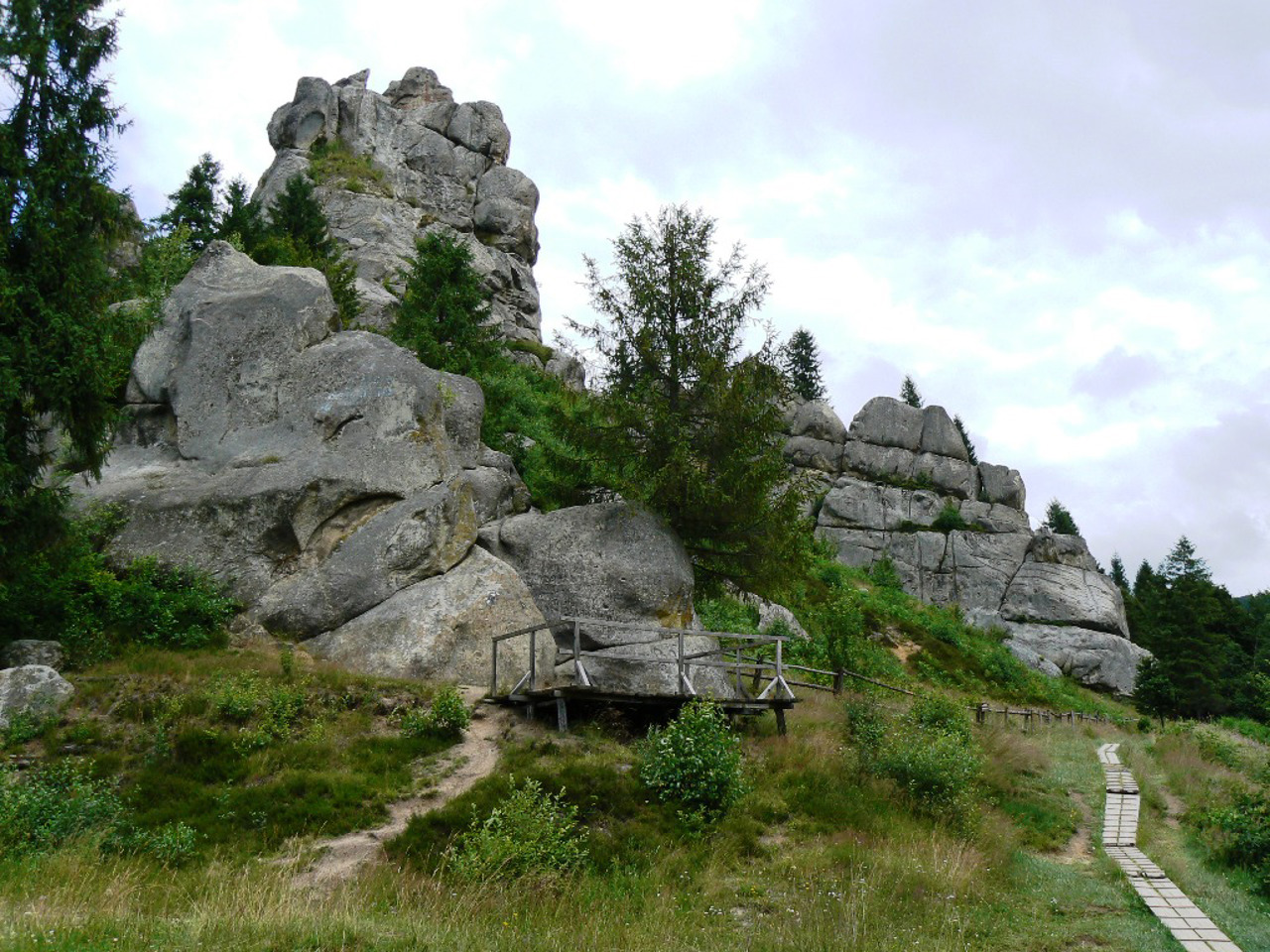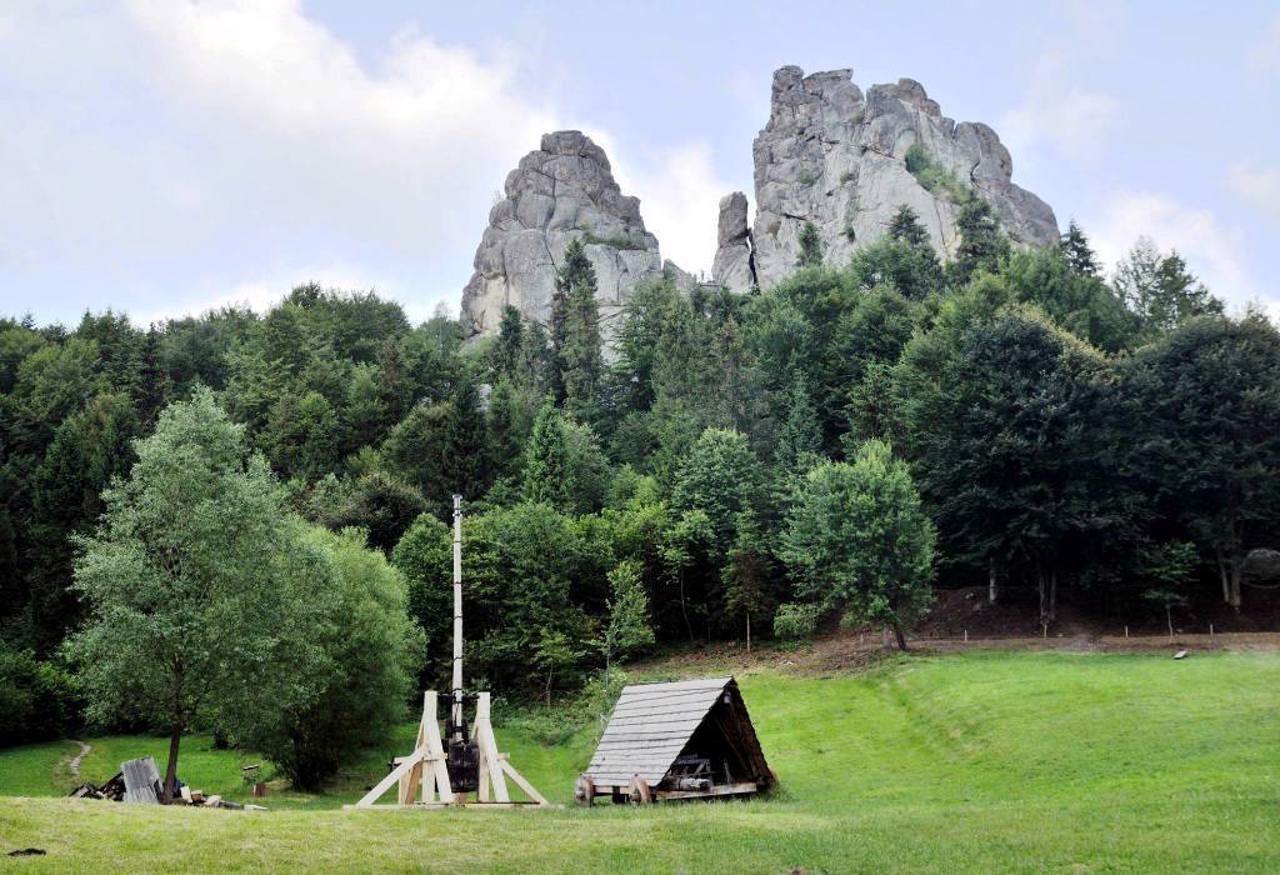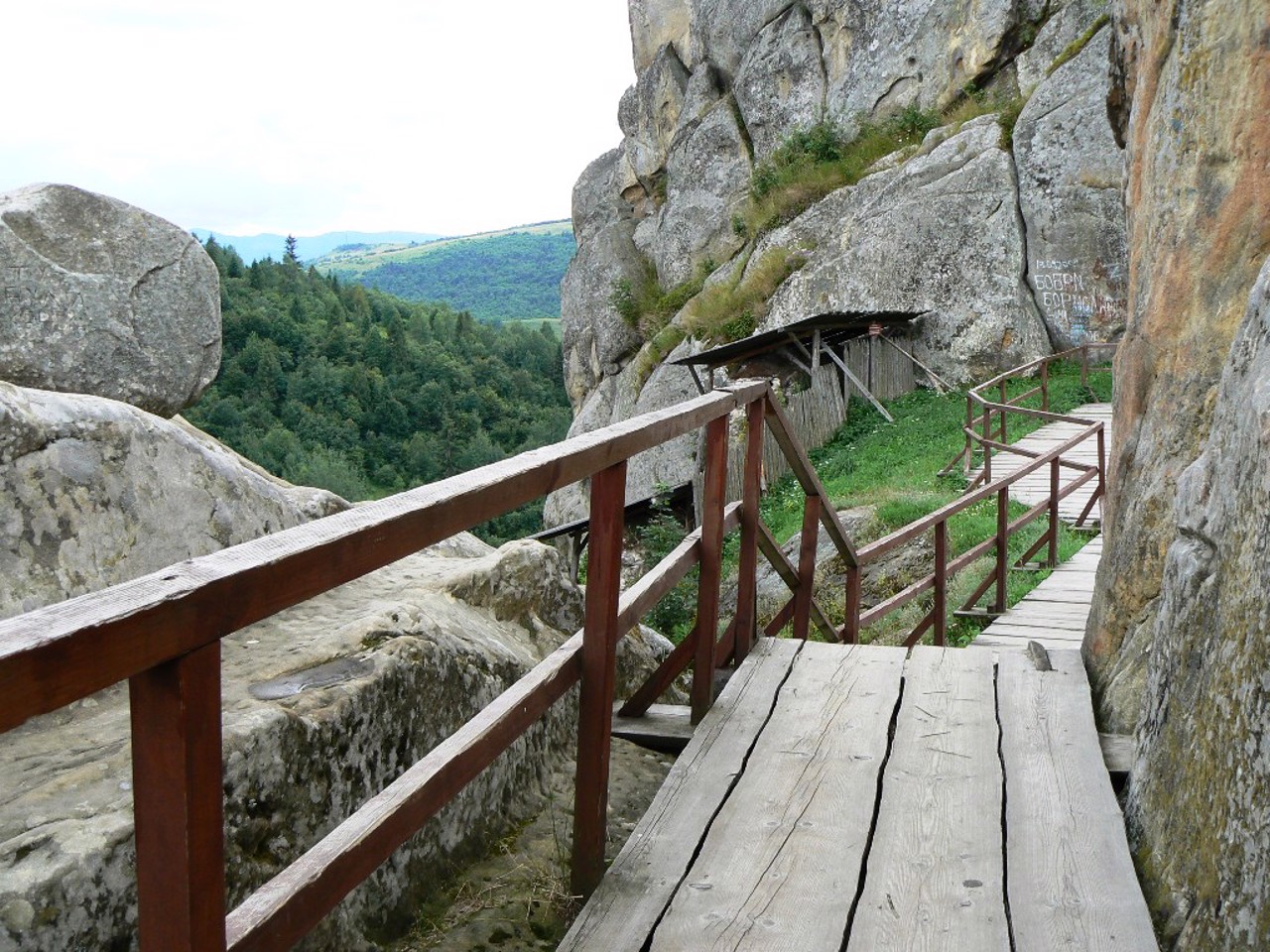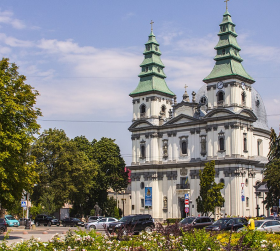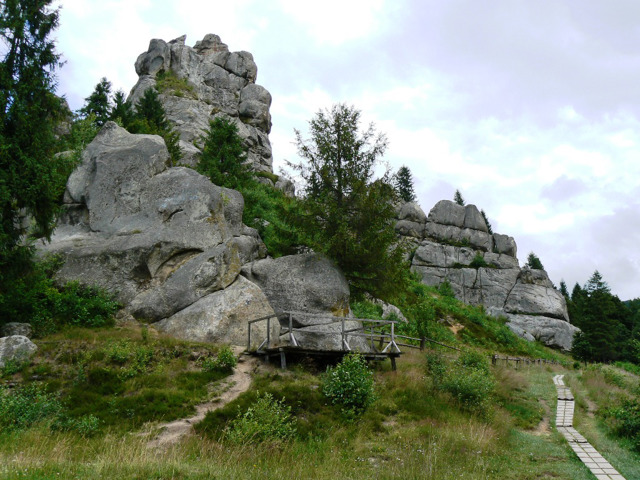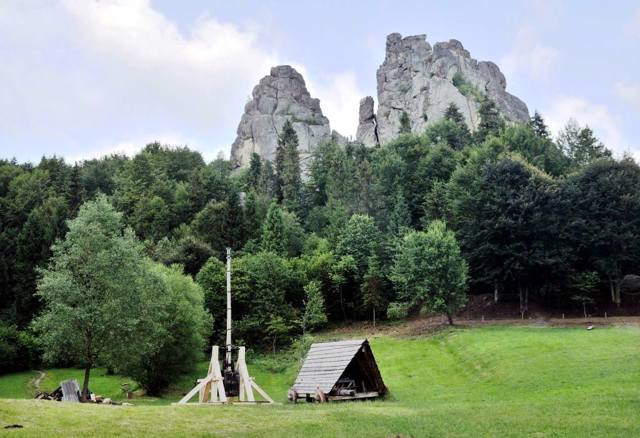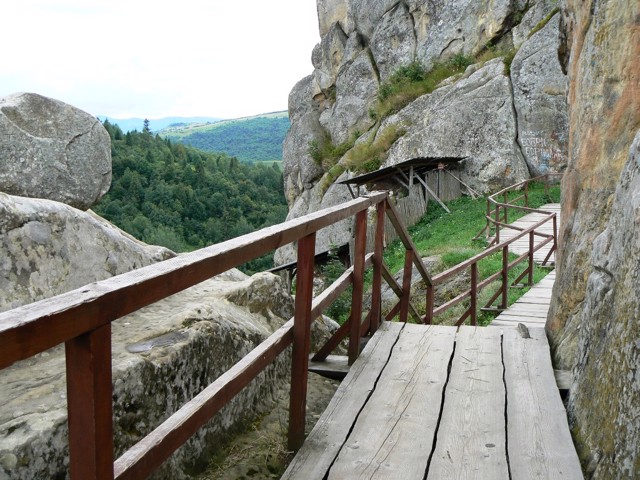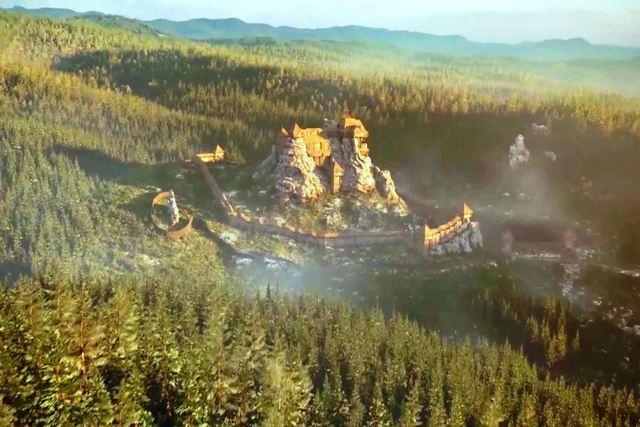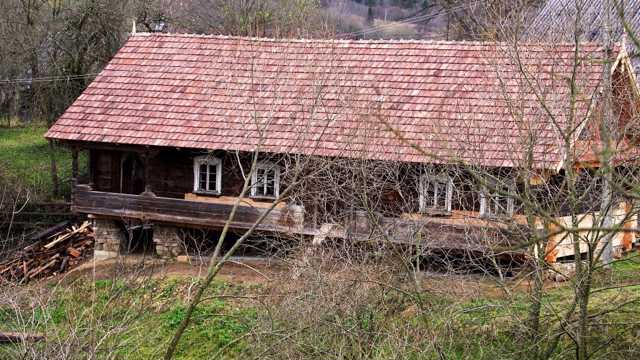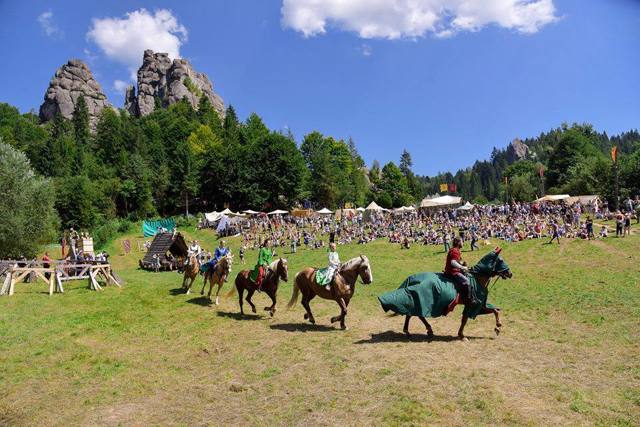Functional temporarily unavailable
Attractions of Ukraine
Attractions region
Attractions Lviv region
Attractions Stryi district
Attractions Urych
Tustan Historical and Cultural Reserve
Tustan Historical and Cultural Reserve, Urych
Historic area
Castle / fortress
General information about Tustan Historical and Cultural Reserve (Urych)
The Tustan fortress city is an ancient Rus rock defense complex that served as a border fortress and a customs post (the name is interpreted as an order to the traveler: "Tu stan!" (Stand!). Also known as "Dovbush Rock".
The first fortifications on the Rock of Kamin in the area of the current village of Urych were built by the White Croats in the 9th century. Wooden structures were inserted directly into the rock massif (grooves and cuts in the rock were preserved, which were reconstructed).
The Tustan fortress was an important stronghold of Kyivan Rus, later the Principality of Galicia-Volyn. In 1241, it was destroyed by the hordes of Khan Batiy, and in 1340 it was captured and rebuilt by the Polish king Kazymyr the Great as a royal fortress. Through it, ...
The Tustan fortress city is an ancient Rus rock defense complex that served as a border fortress and a customs post (the name is interpreted as an order to the traveler: "Tu stan!" (Stand!). Also known as "Dovbush Rock".
The first fortifications on the Rock of Kamin in the area of the current village of Urych were built by the White Croats in the 9th century. Wooden structures were inserted directly into the rock massif (grooves and cuts in the rock were preserved, which were reconstructed).
The Tustan fortress was an important stronghold of Kyivan Rus, later the Principality of Galicia-Volyn. In 1241, it was destroyed by the hordes of Khan Batiy, and in 1340 it was captured and rebuilt by the Polish king Kazymyr the Great as a royal fortress. Through it, salt mined in Drohobych and its surroundings was exported to Transcarpathia and Hungary. The last owner in the 16th century was the Polish magnate Blitsynsky, after which the fortress lost its importance and disappeared from the annals.
Remains of a stone wall, caves, stairs, a well and two water cisterns have been preserved. In 1994, the State Historical and Cultural Reserve "Tustan" was created, the Tustan History Museum operates.
Місто-фортеця Тустань – давньоруський наскальний оборонний комплекс, що виконував функції прикордонної фортеці та митного пункту (назву інтерпретують як наказ мандрівникові: "Ту стань!"). Також відоме як "Скеля Довбуша".
Перші укріплення на скелі Камінь в районі нинішнього села Урич було зведено білими хорватами в ІХ сторіччі. Дерев'яні конструкції вписали прямо в скельний масив (збереглися пази та вирубки в скелі, за якими проведено реконструкцію).
Фортеця Тустань була важливим опорним пунктом Київської Русі, згодом Галицько-Волинського князівства. В 1241 році її зруйнували орди хана Батия, а в 1340 році захопив і наново відбудував польський король Казимир Великий як королівську фортецю. Через неї до Закарпаття та Угорщини експортувалася сіль, ...
Місто-фортеця Тустань – давньоруський наскальний оборонний комплекс, що виконував функції прикордонної фортеці та митного пункту (назву інтерпретують як наказ мандрівникові: "Ту стань!"). Також відоме як "Скеля Довбуша".
Перші укріплення на скелі Камінь в районі нинішнього села Урич було зведено білими хорватами в ІХ сторіччі. Дерев'яні конструкції вписали прямо в скельний масив (збереглися пази та вирубки в скелі, за якими проведено реконструкцію).
Фортеця Тустань була важливим опорним пунктом Київської Русі, згодом Галицько-Волинського князівства. В 1241 році її зруйнували орди хана Батия, а в 1340 році захопив і наново відбудував польський король Казимир Великий як королівську фортецю. Через неї до Закарпаття та Угорщини експортувалася сіль, яку видобували в Дрогобичі та його околицях. Останнім власником у XVI столітті був польський магнат Бліцинський, після чого фортеця втратила значення та зникла з літописів.
Збереглися залишки кам'яної стіни, печери, сходи, колодязь та дві цистерни для води. В 1994 році створено Державний історико-культурний заповідник "Тустань", діє музей історії Тустані.
Practical information about Tustan Historical and Cultural Reserve (Urych)
Last update
7/24/2025
| Categories | Historic area, Castle / fortress |
|---|---|
| Date of foundation | IX-XVI centuries |
| Hours of work | 10:00-18:00 (November to March - 09:30-17:00) |
| Address |
Tarasa Shevchenko Street, 214
Urych |
| Coordinates |
49.19111111° N, 23.40944444° E
|
| Phone | +380 67 671 3345, +380 32 244 4326, +380 32 261 3780, |
| info@tustan.ua , andriy.kotlyarchuk@tustan.ua | |
| Official site |
http://tustan.ua/ |
|
https://www.facebook.com/tusta... |
|
|
https://www.instagram.com/tu_s... |
|
| YouTube |
https://www.youtube.com/user/T... |
| Additional services | |
| Cost | full ticket - 160 hryvnias, discount ticket - 80 hryvnias; excursion - from 250 hryvnias |
Аccessibility information
Have you visited Tustan Historical and Cultural Reserve in Urych?
Add practical or descriptive information, photos, links
What to see, where to go next?


